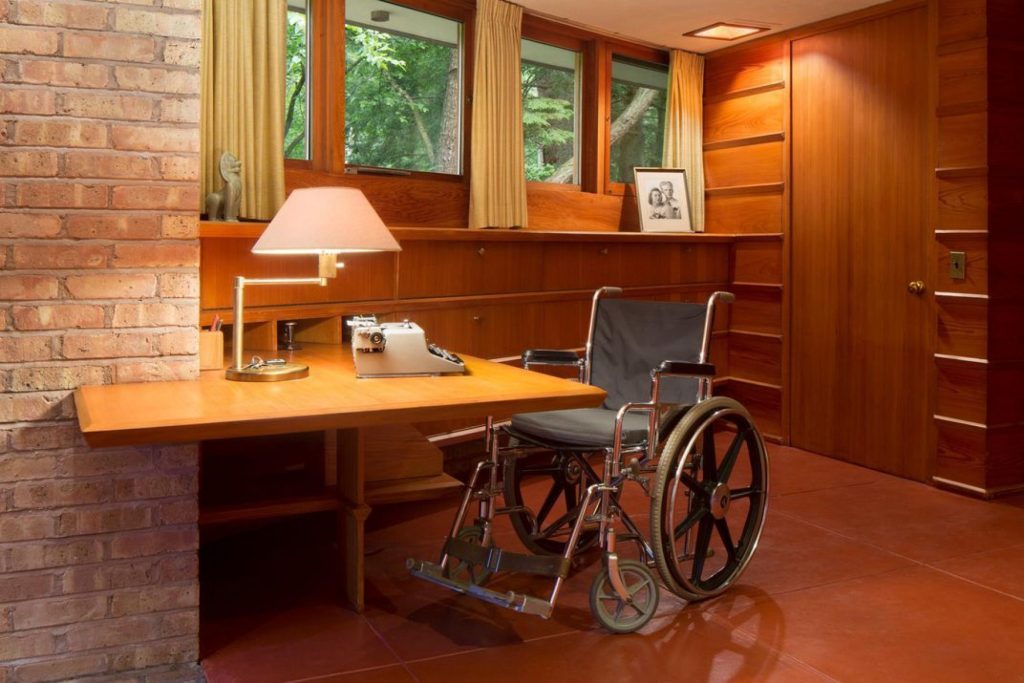We believe that everyone should have access to safe, comfortable, and functional living spaces, regardless of their physical abilities. That’s why we specialize in designing homes that are accessible to people with disabilities, ensuring that they can live independently and with dignity.
As architects and builders, it is our responsibility to ensure that homes are designed and built in a way that accommodates people with disabilities, For Ensures that they can live comfortably and independently but also creates a more inclusive society. We understand that designing accessible homes requires careful planning and attention to detail. Here are some of the key elements we consider when creating an accessible home:

Wide Doorways and Hallways
One of the most basic requirements for an accessible home is to ensure that doorways and hallways are wide enough to accommodate wheelchairs, walkers, and other mobility aids. We typically recommend a minimum width of 36 inches for doorways and hallways to allow for easy maneuverability. By understanding their needs, we can create homes that are not only functional but also aesthetically pleasing.
Universal Design Principles
One approach to designing accessible homes is to follow the principles of Universal Design. This is a design philosophy that aims to create products and environments that are usable by all people, to the greatest extent possible, without the need for adaptation or specialized design. Some of the key principles of Universal Design include:
- Equitable use: The design is useful and marketable to people with diverse abilities.
- Flexibility in use: The design accommodates a wide range of individual preferences and abilities.
- Simple and intuitive: Use of the design is easy to understand, regardless of the user’s experience, knowledge, language skills, or current concentration level.
- Perceptible information: The design communicates necessary information effectively to the user, regardless of ambient conditions or the user’s sensory abilities.
- Tolerance for error: The design minimizes hazards and the adverse consequences of accidental or unintended actions.
- Low physical effort: The design can be used efficiently and comfortably, and with a minimum of fatigue.
- Size and space for approach and use: Appropriate size and space are provided for approach, reach, manipulation, and use, regardless of the user’s body size, posture, or mobility.
Non-Slip Flooring
Slippery floors can be a significant hazard for people with disabilities, especially those who use mobility aids. We recommend using non-slip flooring in all areas of the home, including bathrooms, kitchens, and entryways to allow for easy maneuverability of wheelchairs or other mobility aids.
Wheelchair-Accessible Kitchen
Cooking and preparing food can be challenging for people with disabilities, but with a few modifications, a kitchen can be made fully accessible. This includes ensuring that countertops are at an appropriate height, installing a stove with front-mounted controls, and providing ample space for a wheelchair to maneuver.
Elevators and Lifts
For people with mobility impairments, stairs can be a significant barrier to accessing different levels of a home. Installing an elevator or lift can provide a safe and convenient way to move between floors, ensuring that all areas of the home are accessible.
Smart Home Technology
Smart home technology can be a game-changer for people with disabilities, providing a level of independence and control that was previously impossible. This includes voice-activated controls for lights, thermostats, and other systems, as well as automated systems for opening doors and adjusting window shades.
Accessible Outdoor Spaces
Access to outdoor spaces is essential for people with disabilities, providing opportunities for exercise, relaxation, and socialization. We recommend designing outdoor spaces that are accessible and safe, with features such as wide pathways, non-slip surfaces, and accessible seating.
We understand that designing an accessible home is not a one-size-fits-all process. We work closely with our clients to understand their unique needs and preferences, and we create custom solutions that meet their specific requirements.
Our team of experienced designers, architects, and contractors has extensive experience in creating accessible homes that are beautiful, functional, and safe. We use the latest technologies and materials to ensure that our homes are of the highest quality, and we pride ourselves on our attention to detail and commitment to customer satisfaction.
If you or a loved one are in need of an accessible home, we would be honored to work with you. Contact us